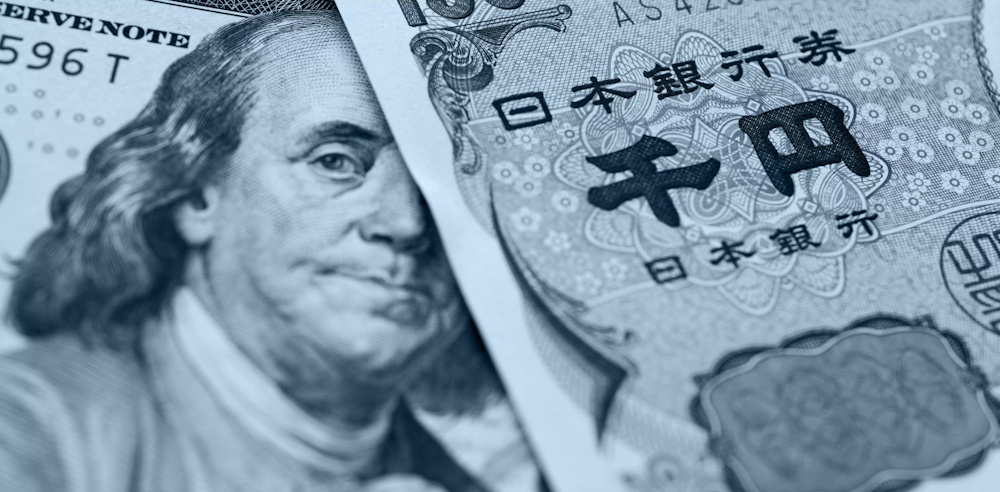The USD/JPY pair surged past 151.00 this week, finishing above 153.00, and briefly reached new eight-month highs, hitting levels not observed since February 13. The pair subsequently declined following a cautionary statement from Japan’s Finance Minister Katsunobu Kato regarding “excessive” FX movements. The current price is centered at 153.00, with initial support levels positioned at 152.60–152.55, alongside the key psychological level of 152.00. Momentum continues to favor the USD as the spot price remains above the critical 152.00 level. A close below 152.00 could lead to a decline towards 151.00, with the potential to reach the post-gap target around 150.00. Should risk aversion escalate to outright liquidation, there is a significant support level near 147.50 that may come into play. On the topside, layered offers are positioned around 153.70–153.75, followed by 154.00, with an acceleration risk towards 154.70–154.80 (February 11 swing high) and the significant level of 155.00 if those levels are breached.
The bullish scenario is straightforward arithmetic. The US Dollar Index reached a new two-month peak, driven by increased haven demand surrounding Japan and France, even as traders continue to anticipate two Federal Reserve rate cuts before the end of the year. Meanwhile, Japan’s inflation has consistently met or exceeded the Bank of Japan’s 2% target for over three years, with growth recording a fifth consecutive quarter in Q2, and yet the BoJ’s policy rate remains only slightly above zero. The ongoing rate disparity exerts pressure on the Yen, prompting momentum buyers to maintain long positions in USD/JPY during pullbacks. The daily RSI is currently stretched, indicating that near-term pullbacks are likely, but they are not detrimental to the overall trend. The four-hour 20-period moving average around 152.20 represents the initial test; maintaining this level would indicate that the upward momentum remains intact. Initially, NHK indicated that Komeito is set to exit the LDP-led coalition, introducing new uncertainty regarding the transition to LDP leader Sanae Takaichi. Second, Takaichi’s platform suggests robust fiscal expenditures in line with the Abe tradition. In isolation, larger deficits and postponed normalization by the BoJ are detrimental to the Yen. Advisors have suggested a potential for a BoJ hike in December or January; however, the market sentiment leans towards “later, not now,” which supports the strength of USD/JPY. The nuance here is that Takaichi has expressed her desire against a “excessively” weak currency, which could lead to more frequent verbal interventions if the spot price approaches 155.00 and higher.
Producer Prices increased by 0.3% month-over-month in September, following a 0.2% decline in August. This indicates a slight movement towards pass-through and supports the argument for a potential adjustment in December. The growth in average cash earnings has decelerated to 1.5% year-over-year, down from 3.4%, which maintains the Bank of Japan’s cautious stance regarding a declaration of victory on wage increases. Private consumption constitutes approximately 55% of GDP; in the absence of wider wage momentum, the Bank of Japan is more inclined to take action once and then pause. The persistence of wide rate differentials results in a limited Yen rally, unless there is official intervention. Despite the government shutdown entering its second week, the strength of the USD remained intact. The University of Michigan Consumer Sentiment reported at 55.0, surpassing the consensus of 54.2 and slightly below the previous figure of 55.1—indicating stability—while 1-year inflation expectations decreased to 4.6% from 4.7%, and the 5-year rate remained steady at 3.7%. The current mix does not necessitate an immediate shift in Federal Reserve policy. Comments from FOMC members are significant; any indication that is less dovish than market expectations could lead to a re-steepening of rate spreads and bolster a retest of 154.00–155.00 in USD/JPY.
Kato’s remarks curtailed intraday momentum and contributed to a decline in spot from its peaks. However, the prevailing market assumption is that verbal intervention is anticipated in the low-to-mid 150s, with the potential for more decisive measures increasing if chaotic trading pushes USD/JPY towards the 158–160 range. Historically, Japan tends to favor a stance against vertical price movements, rather than focusing on trends themselves. For traders, this indicates the necessity of acknowledging intraday reversal risk above 154.00, tightening risk on long positions during spikes, and preparing for rapid 1–2 yen movements if news breaks. There are no “insider transactions” in USD/JPY. The nearest interpretation involves speculative futures positioning and custody flows. Increased net-long positioning in USD/JPY futures heightens the potential for volatility in response to intervention news, while bank custody data frequently indicates a month-end rebalancing demand for the Yen. In practice: monitor the tenor of client flow surrounding the Tokyo fix and London close, while also observing the CFTC’s yen net positioning as an indicator of one-sidedness.

